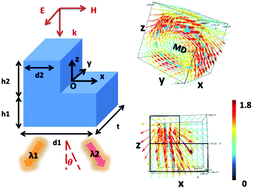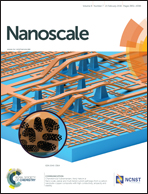Tailoring unidirectional angular radiation through multipolar interference in a single-element subwavelength all-dielectric stair-like nanoantenna
Abstract
The study of all-dielectric nanoantennas has become an emerging branch of the study of optical nanoantennas in recent years, with all-dielectric nanoantennas having an outstanding ability to tailor forward and backward unidirectional scattering arising from interference mainly between electric dipoles and magnetic dipoles induced simultaneously inside a nanoparticle. To further control their radiation properties, we demonstrate the off-normal scattering, by a silicon stair-like nanoantenna, of an incident near-infrared plane wave due to multipolar interference. The radiation angle could be tailored over a 20-degree range by tuning the geometric parameters of the nanoantenna. A multipolar model was adopted to interpret the interference among one electric dipole, two magnetic dipoles and one electric quadrupole induced inside the nanoantenna. The maximum radiation angle reached 20° at a wavelength near 1550 nm. Such a stair-like nanoantenna sets a good example for further flexible manipulation of multipolar resonances inside all-dielectric nanoparticles, which is an essential step towards practical application of all-dielectric nanoantennas in the near future.


 Please wait while we load your content...
Please wait while we load your content...